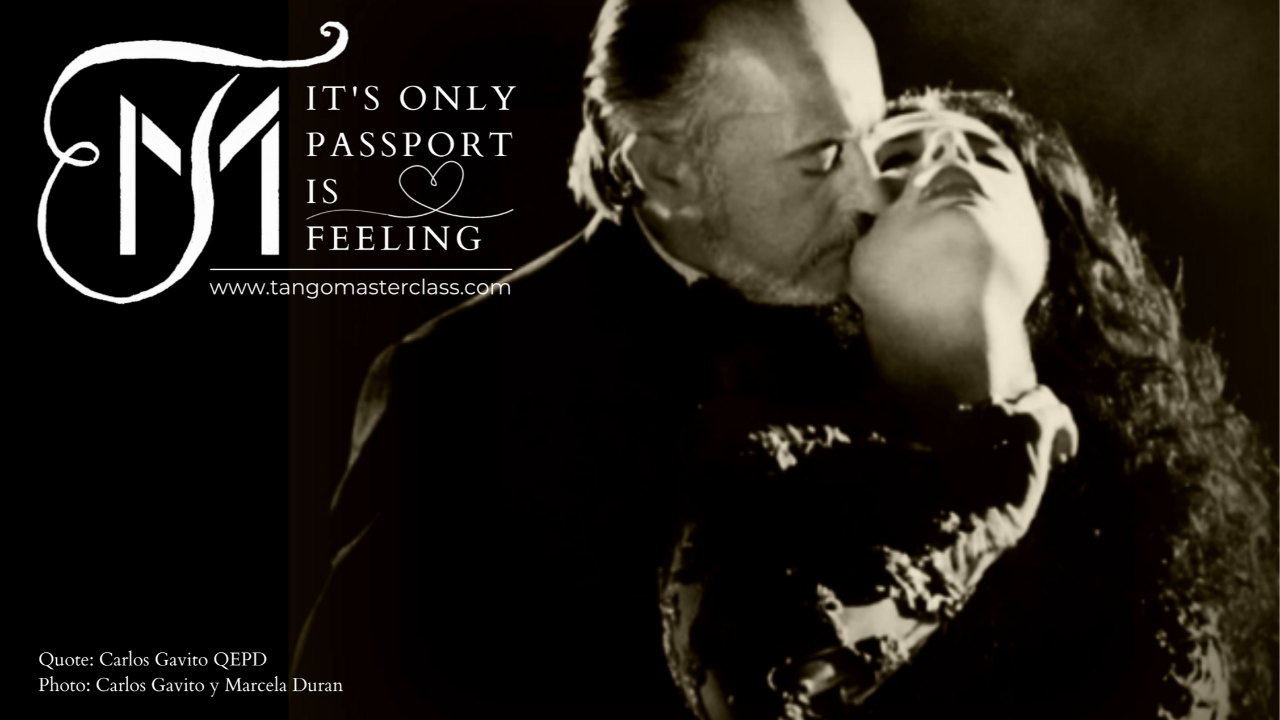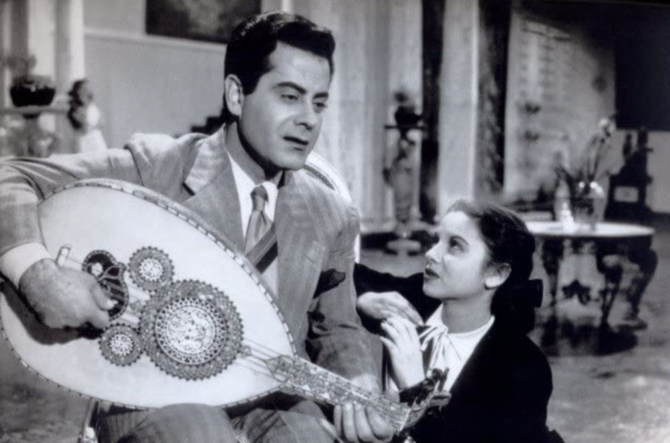Tango: it's only passport is feeling
Jul 24, 2023
© by Cosima Díaz Campos
A few months ago, at a dinner conversation, someone said to me:
"Well, us (... fill in the nationality of the speaker...), we don't dance musically. Don't you agree?"
I said:
"I don't agree".
Tango has no nationality. It's only passport is feeling.
Dancing musically is not a matter of nationality. It is a matter of feelings and skills. Even with basic technical skills, you can still dance very musically. Music comes in through the ears, is filtered in our heart, and is expressed in our body (embrace, steps).
Everybody can learn to dance musically. Some might need more practice than others. If you have only heard one genre of music your whole life, it is more difficult. If you are not very familiar with other genres such as world music, folk music, tango, jazz, etc, it takes more time to get to know a new genre of music and to express it in your dance.
The best way to learn to dance musically, is to listen to the music a lot. Not just at milongas, but also just listening without dancing. And a great excercise is to walk in your living room. Step to the beat, step to the rhythms, feel the pauses of the music, choose an instrument or section to dance to, listen to the phrasings and the mood changes, and acquire different dancing techniques to be able to express the music.
To dance with the music we also need to learn about the culture and history of the dance. It is not just about the beat or the rhythm, it is also about the phrasing, the changes in mood, when and how to pause. For this, we don't only need to undertand the music, but we also need technical skills, to know how to lead and follow a pause, and to know how we can communicate this to our dance partner. Dancing with the music is a two way continuous conversation. When and how we place our feet, and how we transfer our weight, how we breath to the music, all this is in our connection, and we both are inspired by the music and we listen to each others body language during the whole dance.
When I started my year ('96/'97) in Rotterdam Conservatorium to study Tango for violin the first thing my teacher said to me is this: "Cosima, if you want to play tango, you have to listen to it a lot. There is no other way." I took it very seriously, and listened to the ca. 20 cassette tapes he gave me every day. Pugliese, Troilo, D'Arienzo, Di Sarli, Octeto de Buenos Aires, Laurenz, D'Agostino, etc. The fact that I did not dance tango yet, helped me a lot, to listen purely to the music, without any distraction. When I later learnt to dance tango, it was always my main objective to DANCE THE MUSIC.
Community matters. If many dancers in a tango community dance tango in a certain way, then the chances are that other new dancers adapt to this way of dancing. If most dancers ignore the music, it is not easy to become a skilled musical dancers, because you don can not be inspired by the community. On the other hand, if you develop your dance in a community with dancers who dance to the music, you will adapt to it and learn to dance with the music more easily.
Learn from different teachers who teach musicality, because each teacher has their own approach, and you will become more versatile and develop more skills to express your feelings with the music, in the ronda, with your dancepartner.
The feeling of tango is universal.
It is our common humanity.
The legendary dancer Carlos Gavito (Photo above: Carlos Gavito y Maria Plazaola) was famous for his very intense tangodancing, with slow steps and extensive pauses during the dance. He transmitted the intense and intimate feeling of social tango on stage, together with his dance partner Maria Plazaola. He spoke the important and so often quoted words:
"I think those who say that you can't tango if you are not Argentine are mistaken. Tango was an immigrant music... so it does not have a nationality. It's only passport is feeling."
- Carlos Gavito (QEPD)
Yes, Tango is an immigrant music. The mixing of different cultures, combined with the homesickness, the nostalgia, the desire to belong. The roots of tango dance and music are from Ríoplantése (Buenos Aires, Montevideo), originated from a mix of many different cultures.
In this blog we listen to tango's from singers from Syrian-Egyptian, Uzbekistan, Turkey, Poland, Japan.
Farid Al-Atrash (Syria-Egypt)
First we listen to the tango Zahra Fe Khayali from the Syrian-Egyptian composer and singer Farid Al-Atrash.
Farid al-Atrash (1910 - 1974) was a Syrian-Egyptian composer, singer, virtuoso oud player, and actor. He was born in Valayet of Syria, and immigrated to Egypt at the age of only nine years old with his mother and siblings. There he studied under numerous respected musicians.
Farid Al-Atrash embarked on a highly successful career spanning more than four decades—recording 500 songs and starring in 31 movies. Sometimes referred to as "malek al-oud" (the King of the Oud), he is one of the most important figures of 20th-century Arab music.

Tango: Zahra Fe Khayali يا زهرة في خيالي (Flower in my imagination)
Farid Al-Atrash | Syrian-Egyptian composer, singer, virtuoso oud player, and actor.
Lyrics written by Saleh Jawdat in Arabic.
Oh, flower of my imagination, I guarded her in my heart
The nights hurt her, and hands threw her away
And eyes distracted her, and the magic of her eyelids died
My love, everything was lost to me
And love was ripped from my heart and soul
And I gave life my vocal chords and tune
And I sang and my wounds were healed
I am a bird singing in the lands of art
To the birds, to the flowers on the branches
Botir Zokirov (Uzbekistan)
Next we listen to the tango Xotirasiga bag'ishlanadi from the Uzbeks singer, writer, poet, painter and actor Botir Zokirov (1936 – 1985). He is considered to be the founder of Uzbek pop music. Zokirov gained a wide popularity due to singing in many languages including Uzbek, Russian, Arabic and French.
In 1957 he performed at the International Festival of Youth and Students in Moscow. His interpretation of the tango "Ya Zahratan Fi Khayali" (يا زهرة في خيالي – "Flower of my imagination), that was composed by one of the most important figures of 20th Century Arab music Farid al-Atrash, made him extremely popular.
In this video below you can listen to his version of this tango.
Tango: Zahra Fe Khayali يا زهرة في خيالي (Flower in my imagination)
Uzbeks singer, writer, poet, painter and actor
Botir Zokirov | Uzbeks composer, singer, painter and actor.
Lyrics written by Saleh Jawdat in Arabic.
=> Especially note the beautiful intermezzo from 2.08 min to 4.24 min <=
Ibrahim Özgür (Turkey)
Next we listen to the tango by the Turkish composer and singer İbrahim Özgür was a Turkish tango composer and singer.
In the late 20s and 30s tango was very popular in Turkey. Turkish musicians and singer Ibrahim Özgür wrote many tango songs and had an evident talent for nostalgia. His velvety voice was predestined for romantic tangos. With Turkish, Armenian and Jewish musicians Tango established itself very quickly in Turkey. At the time Istanbul was a cosmopolitan city with many foreigners and elegant audiences enjoying themselves in countless night clubs. The first Tangos were performed by female soloists. The first man to win such an audience was Ibrahim Özgür.
Özgür was born into a musical family in Ayazpasa, Istanbul. His father Mustafa played the horn in the state orchestra. When Ibrahim was 16 he went to Ankara, in order to study clarinet and saxophone in the Military Academy. After he'd finished studying he went back to playing in night clubs in Istanbul. He founded his own orchestra and became famous for his talented arrangements. In 1931 he began the adventure of his life: He went on a 7 year concert tour to the Far East. This tour began in Beirut and took him to India, Java, Sumatra, Singapore and Ceylon. In 1938 Özgür made his first recording. Özgür returned to Istanbul via England, where he then opened his own club. In his country house near Istanbul where he kept horses, dogs, birds and even a bear, Özgür died of a heart attack. It was the evening of 11th. February 1959. His voice however remains immortal.
His best-known tango, “Mavi Kelebek” (listen below), was inspired by an Indian princess whom he met during a tour .
Unhappy love, the pain of parting and of longing - these are the three emotional pillars of real the tango... Özgür drew inspiration from his unrequited love for an Indian princess. In later years he never ceased to think about returning to her. On the day before he died Özgür said: "I'm 49 years old. Two thirds of my life are over. As a musician I am in my 30th. year. A long time ago I gave a concert in Southern Asia. Ah, how I'd love to go abroad!"
Tango: Mavi Kelebek (Blue Butterfly)
Tango: Son Nefes (Last Breath)
I have found only one orchestra that plays Son Nefes at milongas: Orquesta Z with bandoneonist & singer Bendrew Jong:
More blogs about Tango around the world:
Poland
Listen to the Polish version of Poema in this blog:
https://www.tangomasterclass.com/blog/poema
Japan
Listen to the Japanese tangosinger Ikuo Abo San in this blog:
https://www.tangomasterclass.com/blog/tango-in-kimono
Tango has no nationality, it's only passport is feeling.


